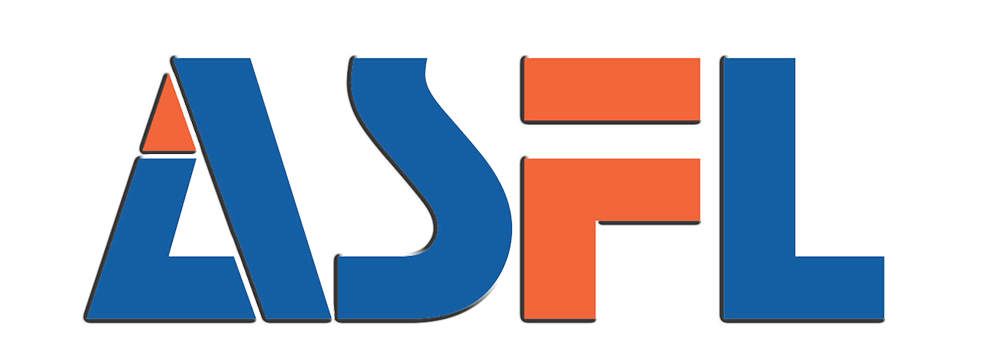Key Factors Influencing Water Bottle Filling Machine Footprint
Production Capacity and Line Speed Requirements
The size of a water bottle filling machine is closely related to how many bottles it can fill each hour. When looking at high speed machines that handle over 3,000 bottles per hour, they actually take up about 25 to 40 percent more room on the factory floor compared to basic models. This extra space is needed for bigger motors, areas where bottles wait their turn, and spots for checking quality standards. Most experienced equipment makers suggest doing some kind of production audit first before setting anything up. They've seen too many cases where people guess too high on what they need, and end up wasting valuable factory space because of it. Getting this right from the start saves headaches later on.
Bottle Size, Shape, and Container Handling Needs
Irregular container profiles increase machinery width by 18–35% to prevent misalignment, as shown in recent bottling line layout studies. PET bottles under 1L typically need 1.2m wide conveyors, while 5-gallon jugs require 2m pathways. Adjustable guide rails and quick-change capping heads add 0.8–1.5m² to the machine's base dimensions.
Automation Level and Integration of Pre-Filling Processes
Fully automated lines with integrated rinsing and labeling reduce total floor space by 15% compared to manual component loading systems. However, automated palletizers and robotic arm integrations extend machine depth by 2.5–3m to accommodate movement arcs.
Conveyor Length, Turn Radius, and Operator Access Clearance
Every 90° turn in conveyor routing requires 2.8–3.5m radius clearance. OSHA mandates 0.9m maintenance corridors on both sides of filling stations, adding 1.8m to total line width. Vertical Z-fold conveyors can reduce horizontal space needs by 40% in facilities under 6m ceiling height.
Typical Space Requirements for Fully Automatic Bottling Lines by Capacity
Compact Systems for Small-Scale Production (500–2,000 BPH)
Space-efficient bottling solutions for startups and pilot plants typically require 150–300 sq. ft., with inline layouts minimizing conveyor turns. These systems prioritize vertical integration—according to a 2024 Packaging Machinery Report, 63% of new installations under 2,000 BPH use stacked rinser-filler-capper modules, reducing floor space by 40% compared to horizontal layouts.
Mid-Range Layouts for 3,000–6,000 BPH Water Filling Machines
Mainstream production systems demand 400–700 sq. ft., with L-shaped configurations being most prevalent. A typical layout includes:
- 12–16 ft. for bottle unscrambling and orientation
- 20–25 ft. for pressurized filling carousel
- 15 ft. for screw capping stations
- 10 ft. buffer zones between modules
Proper spacing between components improves maintenance efficiency by 29% while reducing downtime risks.
High-Capacity Lines (8,000+ BPH) and Facility Infrastructure Needs
Industrial-scale water bottle filling machine installations require 1,200–2,500+ sq. ft. with reinforced flooring (±150 PSF load capacity). Key spatial considerations include:
| Component | Space Requirement | Critical Factor |
|---|---|---|
| Rotary Filling Turret | 25–35 ft. diameter | CIP system access clearance |
| Labeling & Packaging | 45–60 ft. linear | Simultaneous SKU change capacity |
| Palletizing Zone | 800–1,200 sq. ft. | AGV navigation paths |
Modern U-shaped layouts can increase output density by 18% compared to traditional straight-line configurations through optimized recirculation conveyor routing.
Optimizing Factory Layout for Efficient Water Bottle Filling Operations
Inline vs. L-Shaped vs. U-Shaped Production Flow Designs
Inline layout setups save on horizontal space because they line up all the equipment in a straight path, making them really good for spaces where width is limited. The L shape works well too since it keeps things like rinsing and sterilizing away from where bottles get capped and labeled after filling, which cuts down on workers bumping into each other. For big volume operations, U shaped arrangements tend to work best. They let operators see everything happening at once while bottles just keep moving along smoothly through the process. According to some recent industry findings published last year, these U shaped setups actually cut down how long conveyors need to be by somewhere between fifteen and twenty percent when compared with traditional straight line systems. That means less material needed for those belts and generally lower maintenance costs over time.
Integrating Rinsing, Filling, Capping, and Labeling in Minimal Space
Modern water bottle filling systems combine rinsing and filling modules into single-frame units, saving 8–12 ft² of floor space. Vertical integration stacks capping heads above filling nozzles, while rotary labelers rotate products within a 3 ft radius. Key spatial considerations:
- Minimum 18" clearance between machine panels and walls for CIP system access
- Overhead utility routing for compressed air and water lines to avoid floor obstructions
- Retractable guide rails accommodating bottle sizes from 12 oz to 2.5 liters
Maintenance Access, Safety Zones, and Operator Workflow Efficiency
NFPA-compliant layouts maintain 36" safety corridors around water bottle filling machines, with emergency stop buttons reachable within 5 seconds from any workstation. Color-coded zones improve workflow:
- Yellow: Technician access for nozzle calibration (6–8 daily interventions)
- Green: Material reloading stations (caps, labels)
- Red: High-voltage components requiring lockout/tagout procedures
OEM guidelines recommend allocating 20–25% of total line length for maintenance access—a critical factor often overlooked in compact layouts.
Future-Proofing Layouts with Modular and Scalable Configurations
Modular water bottle filling systems enable capacity upgrades without reconfiguring entire production lines. A 2023 case study showed manufacturers adding 1,200 BPH capacity by installing stackable filler modules in existing footprints. Forward-thinking designs incorporate:
- Universal mounting plates for quick-swap capper/labeler units
- Overbuilt utility conduits supporting 150% of current demand
- Mobile buffer zones that convert to expansion areas
Facilities using scalable bottling line designs report 30% faster production upgrades compared to fixed layouts.
Real-World Application: Space Planning for a 5,000 BPH Water Filling Line
Floor Space Mapping and Equipment Zoning in a Medium-Scale Plant
Efficient zoning of a water bottle filling machine requires balancing production flow with safety protocols. A typical 5,000 bottles-per-hour (BPH) line needs 2,500–3,500 sq. ft., allocated across:
- Material infeed zones (15–20% of total space) for bottle/preform storage
- Central processing area (50–60%) for rinsing, filling, capping, and labeling modules
- Outfeed/packaging zones (20–25%) with palletizing and temporary storage
Placing the filling machine centrally reduces conveyor complexity while maintaining 36" clearance for maintenance access.
Overcoming Spatial Constraints Through Smart Conveyor Routing
L-shaped or U-shaped layouts can reduce a 5,000 BPH line’s footprint by 18–25% versus linear designs. Key strategies include:
- Using 45° merge/divert units to minimize collision points
- Implementing vertical lift conveyors to bypass support columns
- Positioning inspection stations above filler/capper modules
This approach streamlines bottle movement from unscrambling to palletizing without backtracking, which often causes 7–12% efficiency losses in cramped facilities.
Measuring Efficiency Gains from Optimized Machine Placement
A 2023 case study showed repositioning boosted output by 33% in identical floor areas:
| Metric | Before Optimization | After Optimization |
|---|---|---|
| Daily Output | 84,000 bottles | 112,000 bottles |
| Changeover Time | 47 minutes | 28 minutes |
| Energy Use per Bottle | 0.18 kWh | 0.14 kWh |
Proximity between rinsing and filling stations alone reduced water pump load by 22%, proving thoughtful spatial planning directly impacts operational costs.
Innovations Reducing the Footprint of Modern Water Bottle Filling Machines
Space-Saving Design Trends in Fully Automatic Bottling Lines
Water bottle filling equipment these days incorporates vertical stacking and foldable conveyor belts to save valuable factory floor space. When manufacturers arrange the rinse, fill, and cap components one on top of another instead of side by side, they cut down on how much room the machine takes up horizontally without slowing production speeds. The newer compact robotic arms take up about 15 percent less space than older models and move bottles around much better. Plus there are built-in quality checks right along the production line so no extra area needs to be set aside just for testing. Industry reports show that all these improvements mean today's machines occupy roughly 30 to 40 percent less space than what was standard ten years ago, which is quite impressive when considering manufacturing costs.
Modular Units and Vertical Integration for Compact Facilities
Top equipment makers have started developing modular setups where filling, sealing, and labeling all happen within one compact frame. The beauty of these systems is they can be adjusted pretty fast when switching between various bottle dimensions, and there's no need to clear out extra room on the factory floor for this changeover. Some plants have even adopted vertical transport mechanisms that move bottles up and down through different levels rather than having them travel long distances horizontally across expansive manufacturing areas. According to research published last year from a group of packaging experts, companies implementing these kinds of modular bottling arrangements saw around a 20-25% reduction in the physical space taken up by machines, plus an approximate 15-20% boost in overall production volume. Not bad for making better use of available space!
FAQ
-
What influences the footprint of water bottle filling machines?
Key factors include production capacity, bottle size, automation level, conveyor length, and production flow designs. -
How can factory layouts be optimized for filling operations?
By considering inline, L-shaped, or U-shaped flow designs, integrating modules in minimal space, and ensuring maintenance access. -
What are the benefits of modular and scalable configurations?
They allow capacity upgrades without full reconfiguration, facilitating faster production upgrades. -
How do innovations reduce the machine footprint?
By implementing vertical stacking, foldable conveyors, and modular units to save space and enhance production efficiency.
Table of Contents
- Key Factors Influencing Water Bottle Filling Machine Footprint
- Typical Space Requirements for Fully Automatic Bottling Lines by Capacity
- Optimizing Factory Layout for Efficient Water Bottle Filling Operations
- Real-World Application: Space Planning for a 5,000 BPH Water Filling Line
- Innovations Reducing the Footprint of Modern Water Bottle Filling Machines





